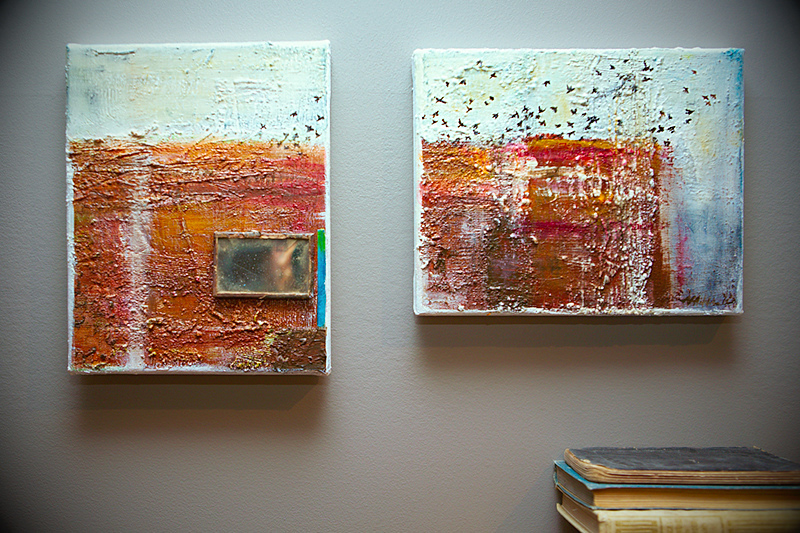
After working on these small canvases for a number of years, I put the finishing touches on them last year. I had been working with that predominant colour since about 2004, as seen in my soybean painting. The colour, as my brother aptly described as “brown” when he visited, is actually glazes of sienna, raw umber, burnt umber, ochre, various yellows, crimson, and red.
It wasn’t until I finished this painting that I realized what the colour symbolized for me. When my grandfather passed away, I returned to Ontario in late fall for the funeral. On the way to the service, I took a photo out the car window of a soybean field (you can see the photograph worked into the soybean painting, as well as an actual plant stalk). Subconsciously, by working with that shade of paint, I was working through my grieving process: my sense of loss of my grandfather, my childhood, my life on the farm.
When I finally finished “Birds take flight,” I was done with my obsession with that colour. I realized I was letting go of perhaps some of the sadness associated with it, so I wanted to give the paintings a lift to communicate the idea of hope and joy. A flock of birds taking flight seemed to be a great way to capture that sense of uplifting, unsuppressed joy, exhilaration.
The way the landscape fades out into the unknown is essentially how I see the future, but with a hint of blue at the top right, where the birds are headed. Originally, the concept of this painting was the view out the window of a moving train (there were 3 canvases but one went so off track that it’s now in the bathroom, telling its own story).
The mirror on the left was found in one of my relatives old stuff. I like the idea of the viewer looking at the landscape and seeing a reflection of herself/himself, but distorted by the age of the mirror, like an allusion to a verse in the Bible, “For now we see in a mirror dimly, but then face to face; now I know in part, but then I will know fully just as I also have been fully known” (1 Cor. 13:12).

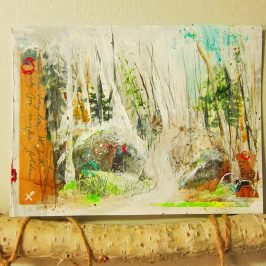
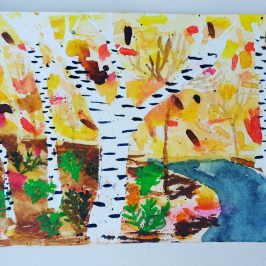
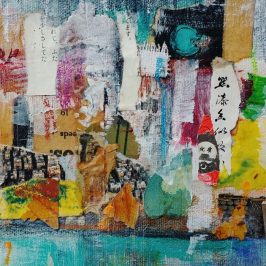
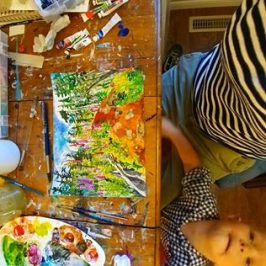

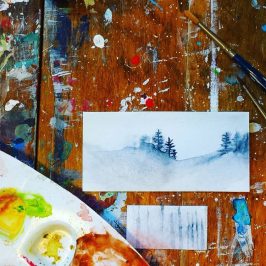
9 Responses